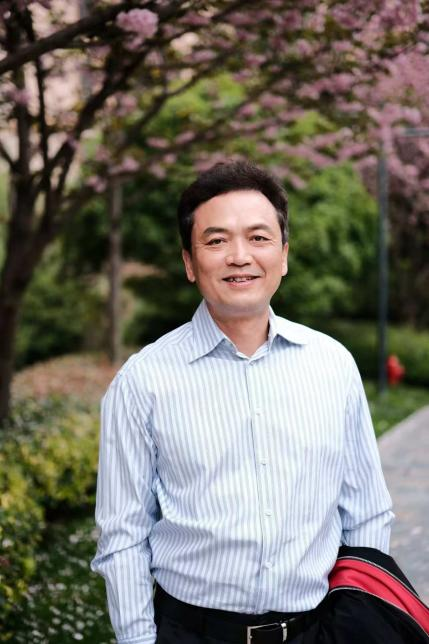Jun Henderson: Global dividends grew 5.8% to 606.1 billion US dollars in the second quarter, setting a new record high.
2024-09-11 11:21
The latest Janly Henderson Global Dividend Index shows that global dividend performance in the second quarter of 2024 was strong. Global dividend payments increased significantly to a new historical high of $606.1 billion, representing an overall growth of 5.8%.
The latest J.P. Henderson Global Dividend Index shows that global dividends in the second quarter of 2024 performed well. The total global dividend payments increased significantly to a historical high of $606.1 billion, a 5.8% overall increase. Adjusted for exchange rate fluctuations, particularly the depreciation of the Japanese yen, the dividend growth rate was impressive at 8.2%. Despite challenges in some regions, especially in the Asia Pacific region, which lagged behind global growth levels, the strong overall dividend performance highlights the resilience of dividend growth in major markets worldwide.
Excluding Japan, the Asia Pacific region saw a basic dividend growth of only 1.1%, well below the global average. Seasonal factors had a significant impact on dividend performance in the Asia Pacific region, with over a third of dividends coming from Hong Kong, which saw a basic growth rate of 1.1% and a total dividend payout of $14.1 billion. The company with the highest dividend payout in Hong Kong was China Mobile (0941), with a dividend payout of $6.3 billion.
Singapore, South Korea, and Taiwan all saw double-digit increases in dividends, led by banks, automobile manufacturers, and Taiwan Semiconductor (TSMC). Singapore saw a basic dividend growth of 15.2% with a total payout of $5 billion, South Korea saw a basic dividend growth of 12.6% with a total payout of $9.3 billion, and Taiwan saw a basic dividend growth of 27.1% with a total payout of $3.9 billion. The companies with the highest dividend payouts in these markets were DBS Group Holdings ($2.1 billion), Samsung Electronics ($3.1 billion), and TSMC ($2.8 billion), respectively.
In Australia, the impact of seasonal factors on dividends in the second quarter was relatively mild. Despite a basic dividend decrease of 24.3%, which was one of the largest declines globally, the overall effect on Australia's total dividends in 2024 was limited. This was mainly due to Woodside Energy drastically reducing its dividend payout, as the company had been the highest dividend payer in the second quarter of 2023. The decrease in profits due to falling commodity prices, inflation pressures, and asset impairments led to this reduction. While strong dividend growth is not expected in Australia for the third quarter, as it represents the seasonal peak for dividends in the region, the total dividend payouts are expected to show more resilience. The company with the highest dividend payout in the second quarter of 2024 was Westpac Banking Corporation (approximately $3 billion).
In the second quarter, where seasonal factors are important, dividends in Japan rose by 14.5%. The dividend payments in yen reached a historical high, but the weak yen meant an overall growth rate of only 1.4%, with dividend payments totaling $37.2 billion. The largest contributors to dividend growth were Toyota Motor Corporation, which is also Japan's largest dividend payer and one of the companies with the largest dividend growth after recording record profits in the previous fiscal year. Honda Motor Co. had the second-largest contribution to growth. Both these exporting giants benefited from the weak yen, accounting for two-fifths of Japan's overall dividend growth. In fact, dividend growth was widespread across industries, with 90% of Japanese companies increasing or maintaining dividend payments.
With strong dividend performance in the second quarter and the potential for strong dividend contributions from newly listed companies this year, J.P. Henderson has raised its 2024 dividend forecast, expecting global companies to distribute a record $17.4 trillion in dividends, a 6.4% increase compared to 2023. This is higher than the 5.0% forecasted in the first quarter report and represents a 4.7% overall growth, higher than the earlier forecast of 3.9%.
Sat Duhra, the manager of J.P. Henderson's Asia Dividend Income investment portfolio, stated that the significant decline in Australian dividends had a dampening effect on overall Asian dividend growth for this quarter, which did not fully reflect the significant increase in Asian dividends so far this year. From the perspective of Asian income portfolios, the region has seen the largest increase in dividends in recent years, not only in South Korea and China, but also in growth markets like India and Indonesia. This indicates that companies are increasingly confident in distributing historically high dividends using cash from their balance sheets. The efforts of governments in certain markets to encourage companies to pay dividends should not be underestimated, taking cues from Japan's experience. These governments will focus on long-term dividend growth, and this initiative has only just begun.
RECOMMEND

Advanced investment education | FATCA & CRS leading global tax transparency, who is most affected?
04/08/2025

34 年股市老兵“曾阿牛”:跑赢纳指 110%仍不满足!从第一代股评家到对冲基金管理人的经历
14/06/2025

The first closed door meeting of the New Intelligence Roundtable Faction and the US Dollar Foundation was successfully held in Shanghai
01/05/2025
Customer Service

Add the WeCom

